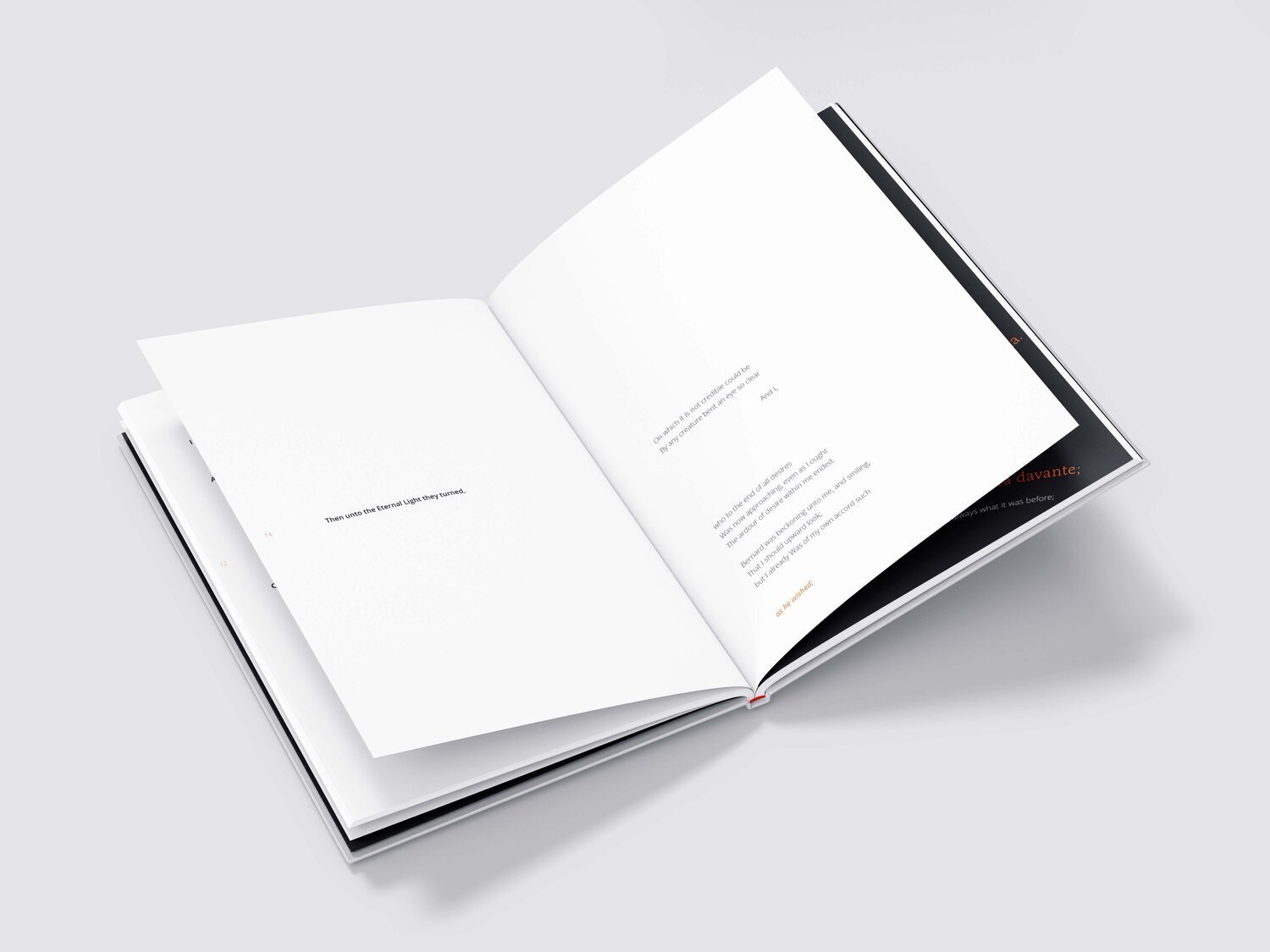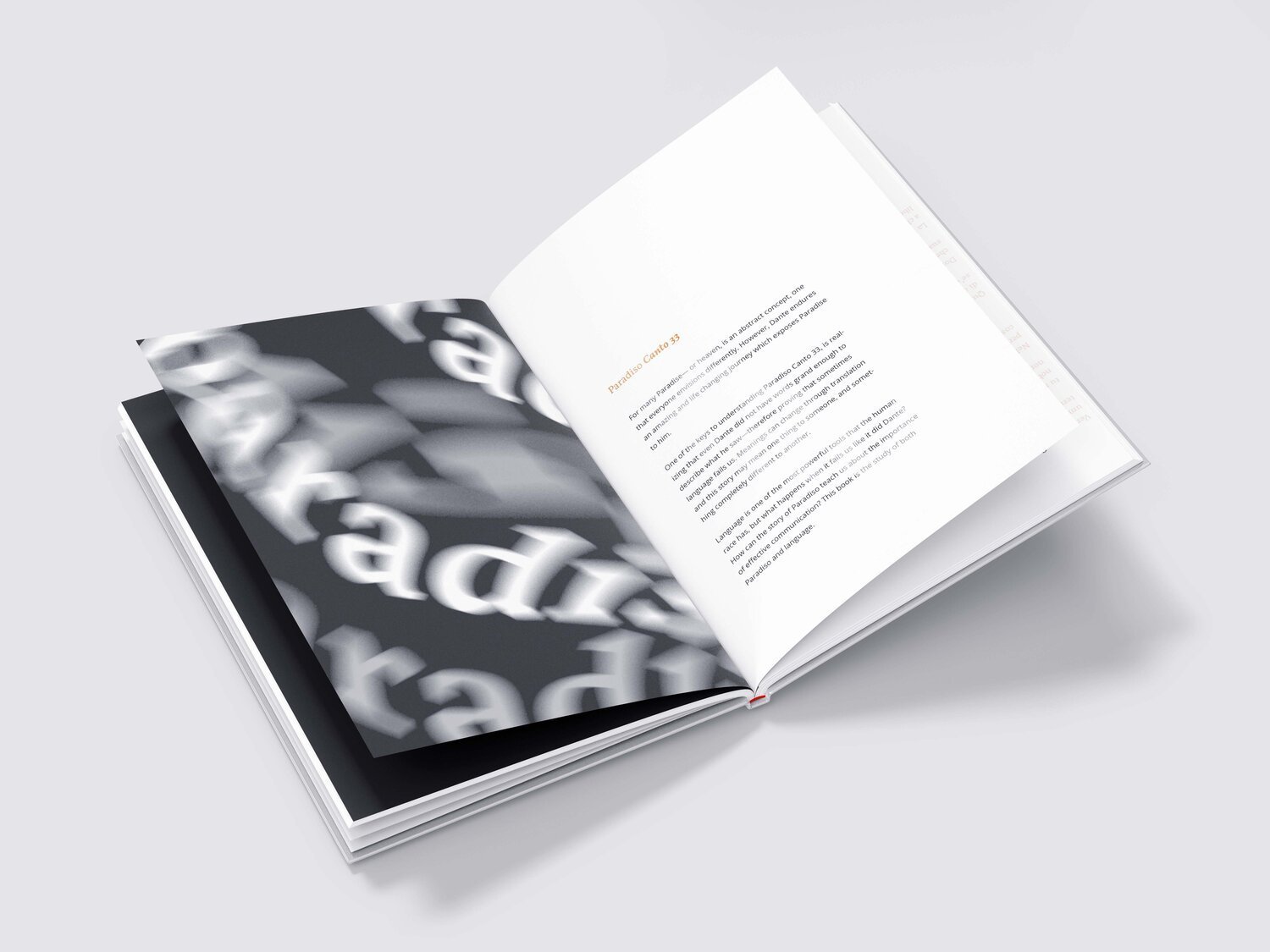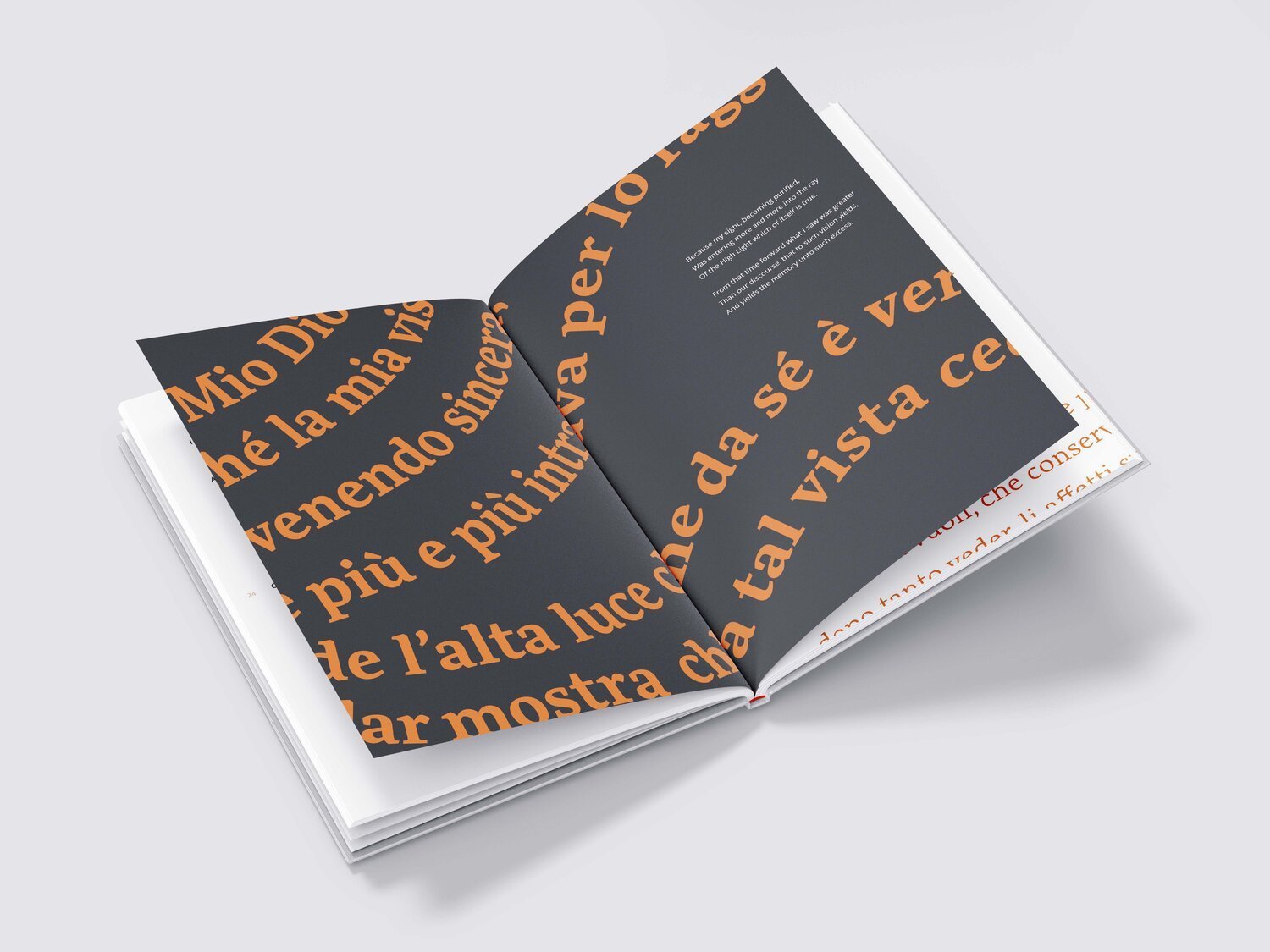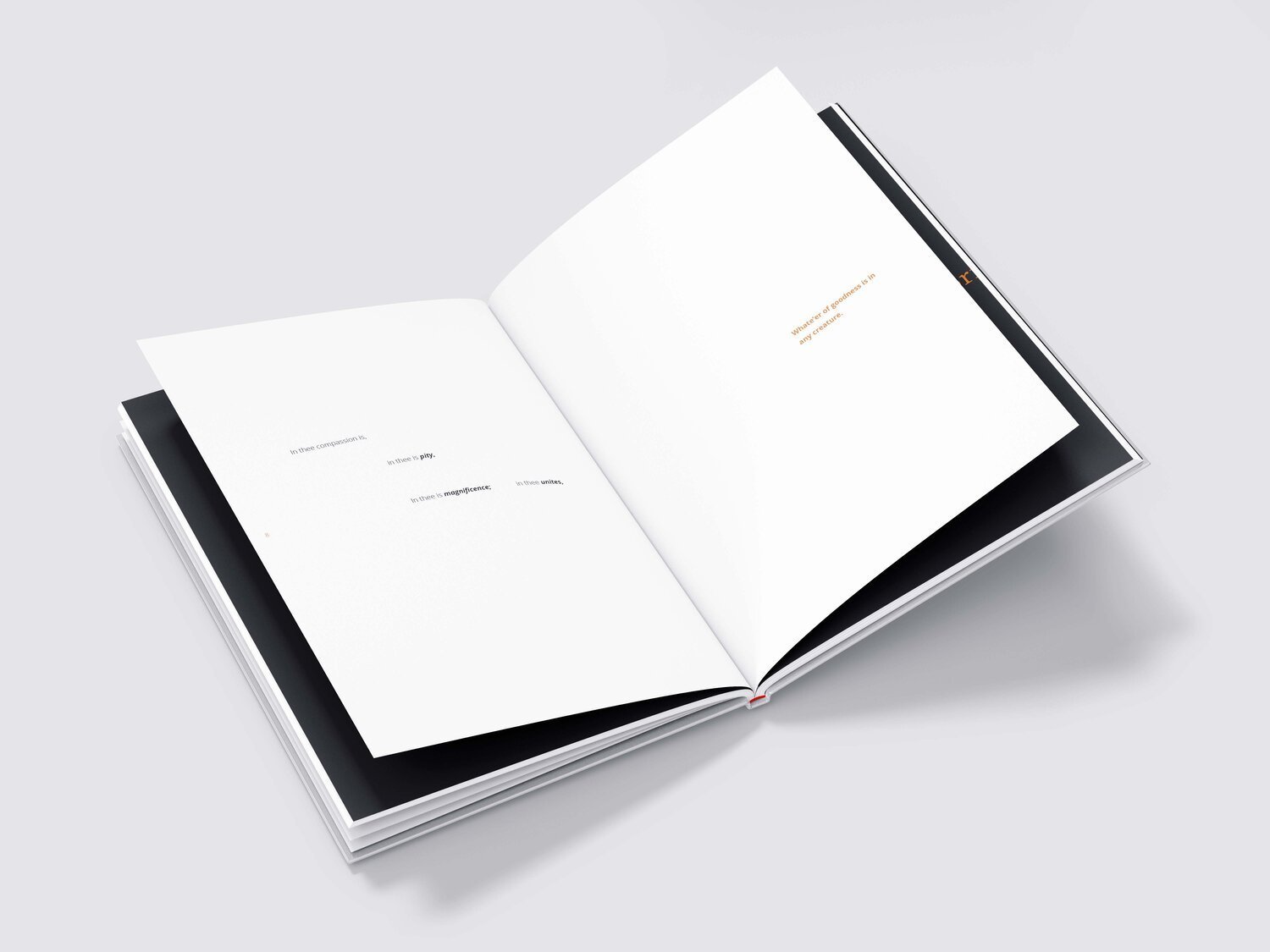Paradiso
A creative interpretation of the Divine Comedy by Dante Alighieri.
design research
type setting
print design
The Story
The Divine Comedy, originally written in Italian and later translated into various languages, symbolizes Dante's journey to heaven. While studying abroad in Italy and learning the language, I had to navigate language barriers to connect with the locals. This experience inspired me to incorporate the nuances of language into my design. I became fascinated by the concept of being "lost in translation," where cultural differences can change the meaning of words or phrases.
Integrating elements from The Divine Comedy, such as the three circles described by Dante, adds layers of meaning. One circle shines blindingly bright, representing Dante's momentary blindness in the narrative. This brightness symbolizes newfound clarity and a pivotal realization on the path to paradise. As the story progresses, the hazy circles gradually fade, mirroring Dante's transformative journey. The evolving typography signifies the enlightenment attained at the end of his journey, becoming more straightforward and streamlined. Expressive layouts represent Dante's challenging path, filled with obstacles, ultimately leading to his arrival in Paradise.
Symbolism
The Three Circles
Encountering three circles on his journey, Dante was momentarily blinded by the intense brightness of one. Upon regaining his sight, he asserted that he had never seen with such clarity before, bringing him closer to the realization of paradise.
The Haze
Dante’s story has been translated into many languages, which inspired me to think about the nuances of languages. A single Italian word might lack an exact equivalent in English, resulting in the inevitable loss of meaning or intention during translation.





